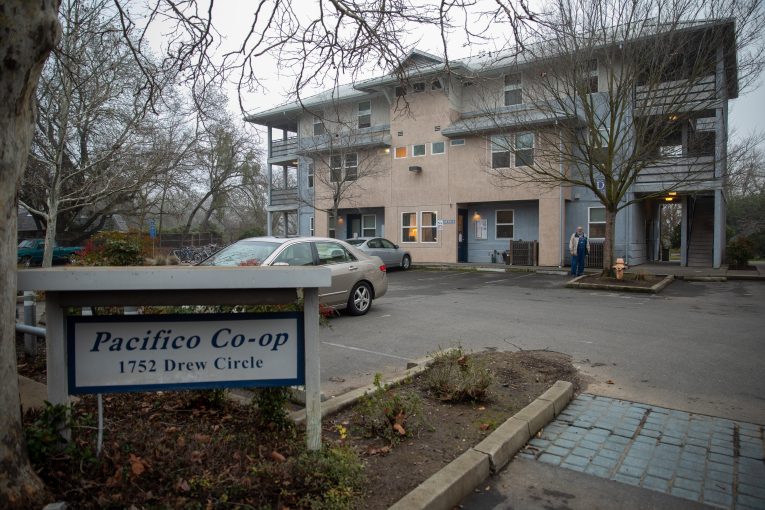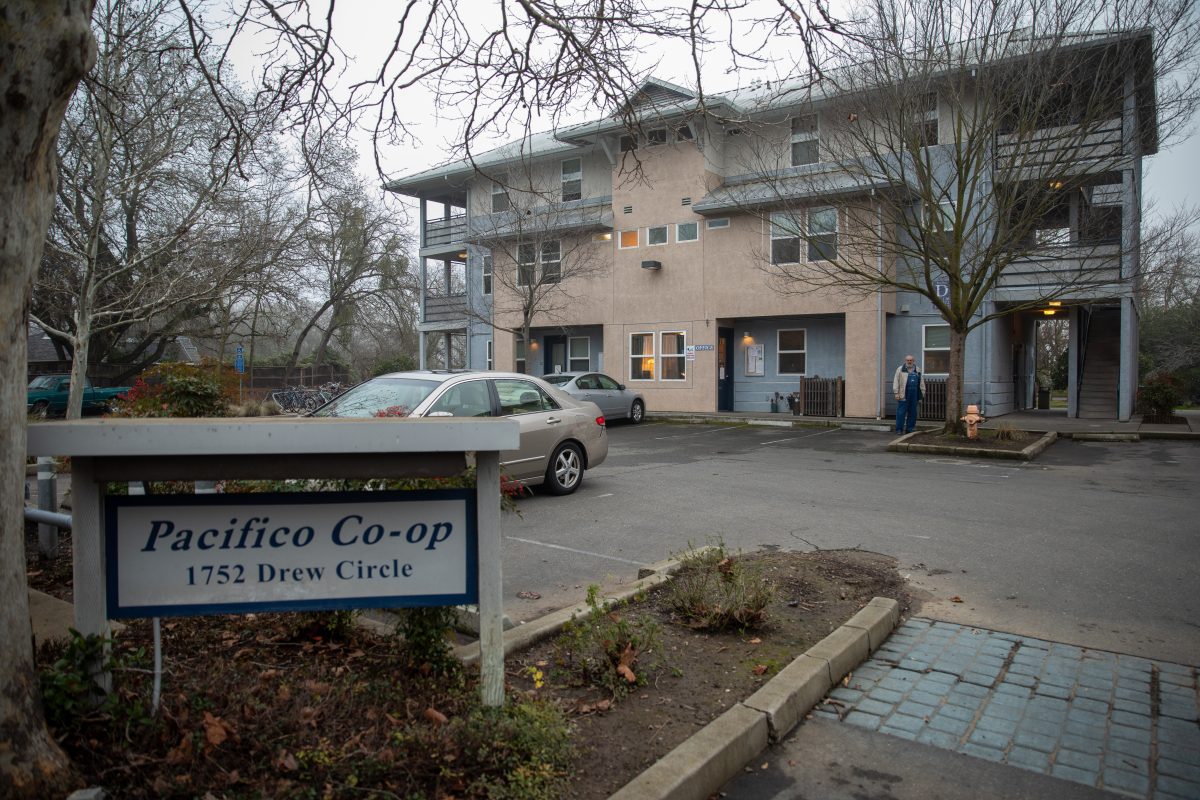

For months now we have listened to anger, frustration and concerns about a nuisance situation at Pacifico. As an independent observer, it is a difficult situation to evaluate. One the one hand, the neighbors raise a number of concerns about their safety and ongoing nuisances.
On the other hand, there has been some indication from both Yolo County Housing and the police that at least some of the problems are incidental to the actual facility there and may have more to do with its location and proximity to the bike path and its inaccessibility to main thoroughfares in Davis, which serves to hide nuisance if not criminal behavior.
One disappointment in this process is that more than six months after neighbors first started coming before the city council to complain, I still don’t feel like I have a good grasp on the source of the problem – the facility itself or its residents or the location.
The staff report really does not help with that evaluation. In Part I, staff looks at the physical facility with an update from Yolo County Housing, noting, “Yolo County Housing, which manages the property on behalf of the City, has continued to work over the past three months to evaluate the property and review the comments and concerns shared at the February City Council meeting, in addition to continuing standard operating procedures.”
It lists 15 items that they have done, from improvements to security to privacy concerns. They also list three things that will be done either later or in conjunction with a future comprehensive rehabilitation.
For instance, it is good that they have continued to work with residents (although it does not detail what they have specifically accomplished). They are also working with the Davis Police Department, which is now attempting to distinguish “between interactions with residents of the property and those in the public right of way.”
But, from the staff report it is still difficult to evaluate in terms of whether the problems were associated with the residents at Pacifico or those who were simply drawn to this location. Moreover, we have no way at this point to know if any of this is working.
I suppose we will hear from neighbors at the meeting on Tuesday. One of my concerns is that relations may now be too poisoned for us to hear a really objective evaluation as to whether things are  working or not.
working or not.
This is all very critical because the council may or may not evaluate whether or not to change the targeted population served by Pacifico.
As we pointed out back in February, some of the comments coming from a select few of the neighbors were highly inappropriate – specifically the “ghetto” comment.
As one person stated: “What I’m really concerned about is what’s happening in the city. We are seeing a condensation of units where there is unwealth… There was never really any ghetto. There were never really any bad units.”
He complained that they are consolidating low income housing in one portion of town, “rather than spreading the burden through the entire city.”
The question I would have – if they change the use from people at-risk of homelessness to low income seniors, does that change the calculation?
Brett Lee old his colleagues back in February: “I don’t believe by changing the use of Pacifico that we’re neglecting people at risk for homelessness or neglecting people in true need for affordable housing. In fairness for the neighbors, I think we need to hit the reset and start with a cleaner slate.”
In the staff report they identify several broader categories of populations that could be served on the Pacifico Property: University Students, Seniors, Special Needs, Families, Artists, Workforce, Veterans and General Low Income.
There is a clear problem that Davis has. The staff notes: “The Davis community has an extremely low vacancy rate. Industry standards consider 5% to be a healthy vacancy rate; Davis’ rate for rental housing has been under 2% for at least the last five years, and currently stands at 1.9%.”
They note: “This lack of availability translates into a need for affordable housing of all types for all low-income populations.”
A few key points to unpack. First, I am still not satisfied that the problems cited by the neighbors are population-based rather than management and location based. So I think the first step before making changes should be to make that determination and exhaust administrative and management remedies.
Second, Pacifico is serving a population where there are clear needs. So the second question should be – if not here, where?
Third, there are clearly lots of populations that are identified as needing affordable housing – if the council chooses to make a change, a key question will be which population has the greatest need?
I would be reluctant to go the senior affordable housing route, in part because it would require a lot of changes. The staff report notes: “The current room configuration at Pacifico is not senior friendly.” They would also need to add elevators and reconfigure the overall floor plan.
Given that we have just approved 1500 senior affordable units in West Davis, it doesn’t seem to make a lot of sense to shift Pacifico to senior housing at this point.
In February several council members stated, as Lucas Frerichs did, “I think it’s time to hit the reset button at Pacifico.”
The question is, what does a reset button look like, and does it require the city to change the population served here?
I would feel a lot better about hitting a reset and changing the population if we had better data and answers to the source of the problem to begin with. And if we do change the population, we need to find space not only for the current population but also for the proposed new uses for the Adult Residential Facility and Navigation Center.
The bottom line is there are a lot of answers we still need in order to make an informed decision.
—David M. Greenwald reporting


I understand that the facility under construction on Fifth Street (in Mace Ranch) will serve the same type of homeless (or near-homeless) population.
If there’s already a problem at Pacifico, is there be an expectation that things will be any different at the new facility? If so, why?
Start with question number one: is there a problem because of the population, the management, or the location of the facility.
Seems to me that those are questions for the city to consider, before another problem is created. Are you aware of any steps the city has taken, in that regard?
Regardless, I don’t see what “location” has to do with it, unless similar locations (without such facilities) have similar problems. (I’d cross that factor off the list, leaving “population” or “management” – or some combination of those.)
“But, I don’t see what “location” has to do with it”
If you’ve followed the issue, the police chief in February laid out a number of concerns with the location including the proximity of the bike path behind the facility, the lack of barrier between it and the facility, the secluded nature of the facility, etc. Yolo Housing both in January and February at meetings argued that the problems were not caused by residents but rather people who came from outside the facility. From what I’ve seen – I don’t feel like we’ve gotten a good answer on this to date. Which is why I asked the question today.
To visit the facility (or someone who resides there)? If so, then that would be attributed to the facility itself, again. (“Population” or “management”.)
There are lots of “secluded” locations (as well as bike paths) in Davis – which aren’t experiencing problems.
Is Yolo Housing also going to manage the new facility on Fifth Street?
“To visit the facility ”
That’s not clear.
“There are lots of “secluded” locations in Davis – which aren’t experiencing problems.”
There are also lots of places that serve those populations that aren’t experiencing problems. That may well point to: management.